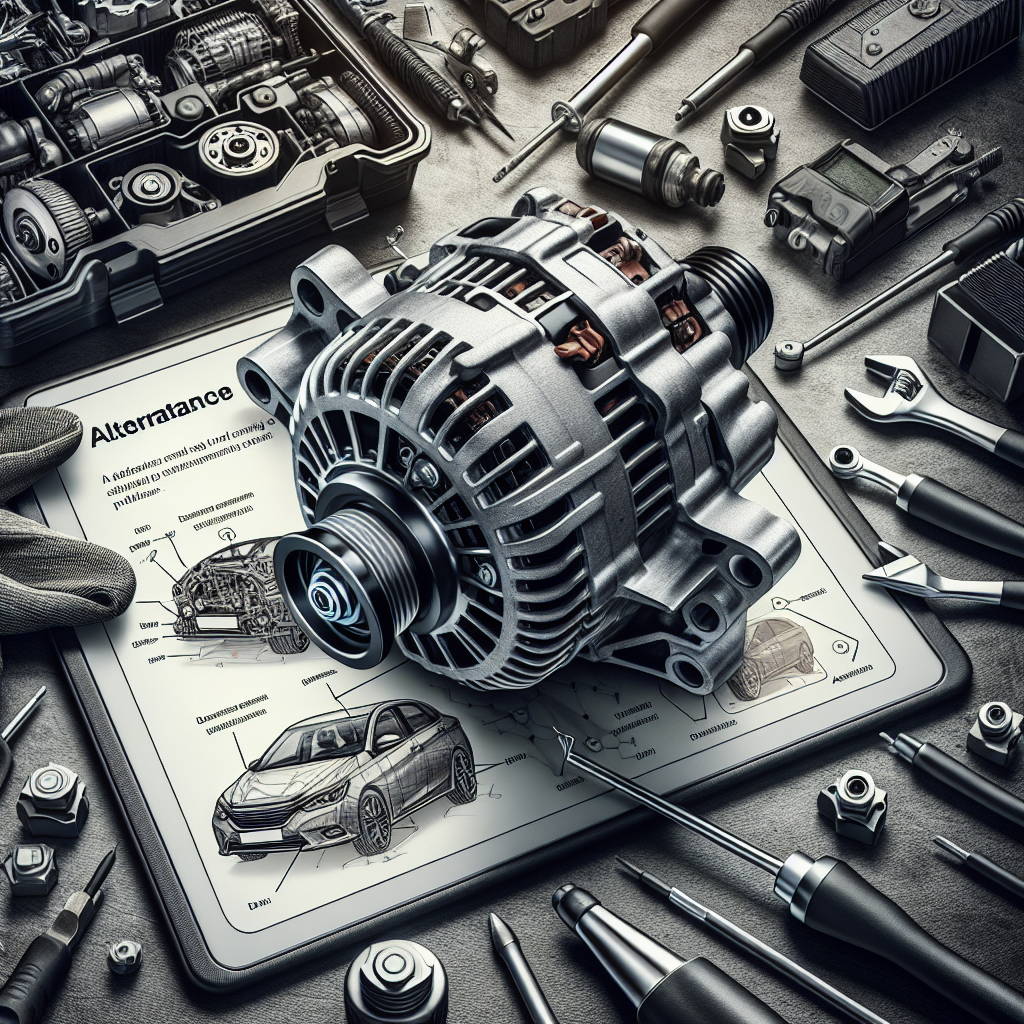
Alternator problems can leave you stranded with a dead battery and a vehicle that won't start. Understanding how to diagnose and fix alternator issues in your 2019 Toyota Corolla can save you time and money, and keep your car running smoothly.
Why Alternator Health is Critical
The alternator is crucial for maintaining your car's electrical system and battery charge. Common symptoms of alternator failure include:
- Dimming headlights
- Electrical issues
- Dead battery
- Warning light on the dashboard
Tools and Materials Needed
- Multimeter
- Wrenches and socket set
- Screwdrivers
- Replacement alternator (if necessary)
- Safety gloves and eyewear
Steps to Diagnose and Fix Alternator Problems in Your Toyota Corolla
1. Check the Battery
- Visual Inspection: Examine the battery for corrosion on the terminals or any visible damage.
- Voltage Test: Use a multimeter to check the battery voltage. A fully charged battery should read around 12.6 volts when the car is off. If the battery voltage is low, charge it and test again.
2. Test the Alternator Output
- Start the Engine: With the engine running, measure the voltage across the battery terminals. It should read between 13.8 and 14.4 volts. If the voltage is below this range, the alternator may not be charging the battery properly.
- Load Test: Turn on the headlights, radio, and other electrical accessories. The voltage should remain steady. If it drops significantly, the alternator might be failing.
3. Inspect the Alternator Belt
- Visual Inspection: Check the alternator belt for signs of wear, cracks, or looseness. A damaged or loose belt can prevent the alternator from charging properly.
- Tension Check: Ensure the belt tension is correct. It should have a slight give but not be too loose.
4. Listen for Unusual Noises
- Engine Running: Start the engine and listen for any unusual noises coming from the alternator. Grinding or whining noises can indicate bearing issues or internal damage.
5. Replace the Alternator
- Disconnect the Battery: Always disconnect the negative battery terminal before working on the alternator to prevent electrical shocks.
- Remove the Serpentine Belt: Use a wrench to relieve tension on the serpentine belt and slide it off the alternator pulley.
- Unbolt the Alternator: Remove the bolts securing the alternator to the engine. Disconnect the electrical connections carefully.
- Install the New Alternator: Position the new alternator and secure it with bolts. Reconnect the electrical connections and the serpentine belt.
- Reconnect the Battery: Reconnect the negative battery terminal and start the engine to test the new alternator.
DIY Option
Replacing an alternator can be a straightforward DIY project if you have the right tools and some mechanical knowledge. Regular maintenance checks can prevent sudden alternator failure and keep your vehicle in top condition.
FAQ: Common Questions About Alternator Problems
1. How long does an alternator typically last?
- An alternator usually lasts between 80,000 and 150,000 miles, depending on the driving conditions and maintenance.
2. Can a bad alternator drain my battery?
- Yes, a failing alternator can cause the battery to drain quickly, as it won't be able to recharge it properly while driving.
3. What are the signs of a failing alternator?
- Common signs include dimming headlights, electrical issues, a dead battery, and a warning light on the dashboard.
4. Can I drive with a bad alternator?
- Driving with a bad alternator is not recommended as it can lead to a dead battery and leave you stranded.
5. How can I prevent alternator problems?
- Regularly inspect the alternator belt, keep the electrical system in good condition, and perform routine maintenance checks.
By following these steps, you can diagnose and fix alternator problems in your 2019 Toyota Corolla, ensuring your vehicle remains reliable and efficient.

